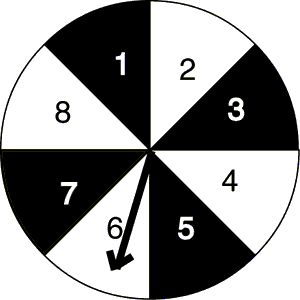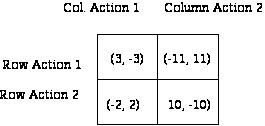
Not All Randomization Devices are Created Equal
Prepared by:
Joseph Malkevitch
Department of Mathematics and Computer Studies
York College (CUNY)
Jamaica, New York 11451
email:
malkevitch@york.cuny.edu
web page:
http://york.cuny.edu/~malk
One of the most important but subtle areas of mathematics is how to model chance, probability, and randomness. Given that human behavior is viewed to be "unpredictable" when dealing with modeling in the behavioral sciences, one needs to have a rich view of chance (stochastic) phenomena.
It is helpful in dealing with chance to have some physical devices (manipulatives) to help one get ideas across. The devices that come to mind here to build intuition about chance are coins, dice and spinners. Coins are widely available but have only two outcomes. For binomial probability models this is helpful but nearly all real world coins are "nearly" fair, and what one often has to do is build intuition for the fact that in most real world situations the probabilities of events are not equiprobable. Dice, the variety that are cubical in shape, are reasonably easy to obtain but again, the probability that each of the 1 to 6 spots occurring is about the same. With some difficulty one can obtain other shapes for dice, but the really nice physical device for studying probability at all grade levels is the spinner.
Figure 1 shows a typical spinner with 8 outcomes where the outcomes are labeled from 1 to 8 but also are coded so that even numbers are white and the odd numbers are black. Students can make their own spinners but many will own board games that come equipped with spinners.
It is tempting to think of probability theory as being the study of the "stabilized value" of relative frequencies of events. However, while this very plausible notion is helpful, it cannot be made rigorous, and so the modern mathematical view of probability is that it involves an axiomatic approach to probability that is surprisingly recent (Andrei Kolmogorov).

By making the regions of a spinner with different areas (angles at the center), one can simulate the occurrence of events where the probabilities of the events are different. This supports topics in elementary school mathematics such as angles, area, ratio, etc. Using the colors one can also talk about things like conditional probabilities. For example, if one gets a black region from a spin, what is the probability that the number on the region is a prime number? While this is a very artificial problem, it allows one to get students to understand concretely the difference between P(X|Y) and P(Y|X) where P(A|B) means the probability that A occurs given that B has occurred.
However, in the end the real problem with probability is that many of the situations where one wants to use it to get insight into the real world involve situations where the events rarely occur. These include things like train derailments, nuclear power accidents, and encounters with asteroids. Much of probability theory is built on the assumption that events occur independently. However, as the recent financial crisis showed, many events that occur in the world of finance and investment are not independent and so the probabilities of these events occurring are sometimes more than the traditional models suggested.
We will be using probability theory in an essential way when we study the theory of zero-sum games (Figure 2), games which are defined using matrices to show the actions of two players and the payoffs that they receive.

Even for non-zero-sum games (Figure 3) it will be important to have some way of understanding chance and randomness. Figure 3 shows

In studying unlikely events, coins and spinners again have some different attributes. When one asks a class what the outcomes from flipping a coin are they will typically answer heads or tails, but sometimes a student may raise the possibility of the coin landing on its edge. This occurs so rarely that it is not common to get this response. However, for spinners, the spinner will reasonably often land on a line between two regions, or at least the eye is not exactly sure which regions it is in. What is happening here is a modeling issue of "randomness" which serves as a contrast with the randomness of radioactive decay for a uranium or radium atom.